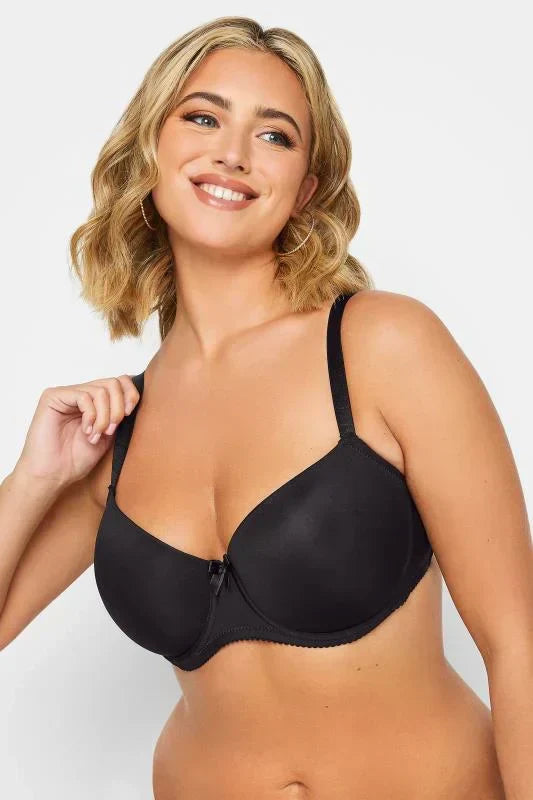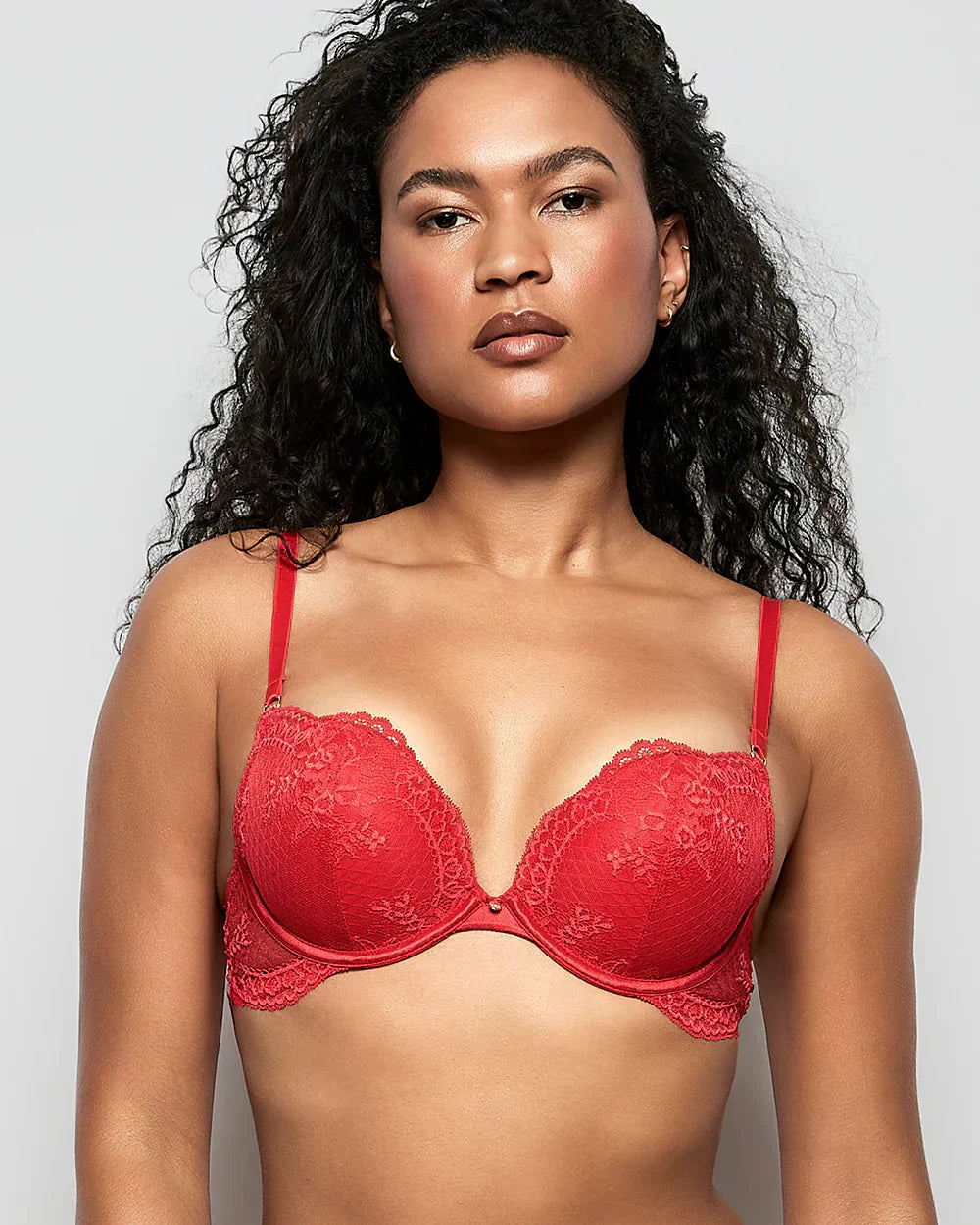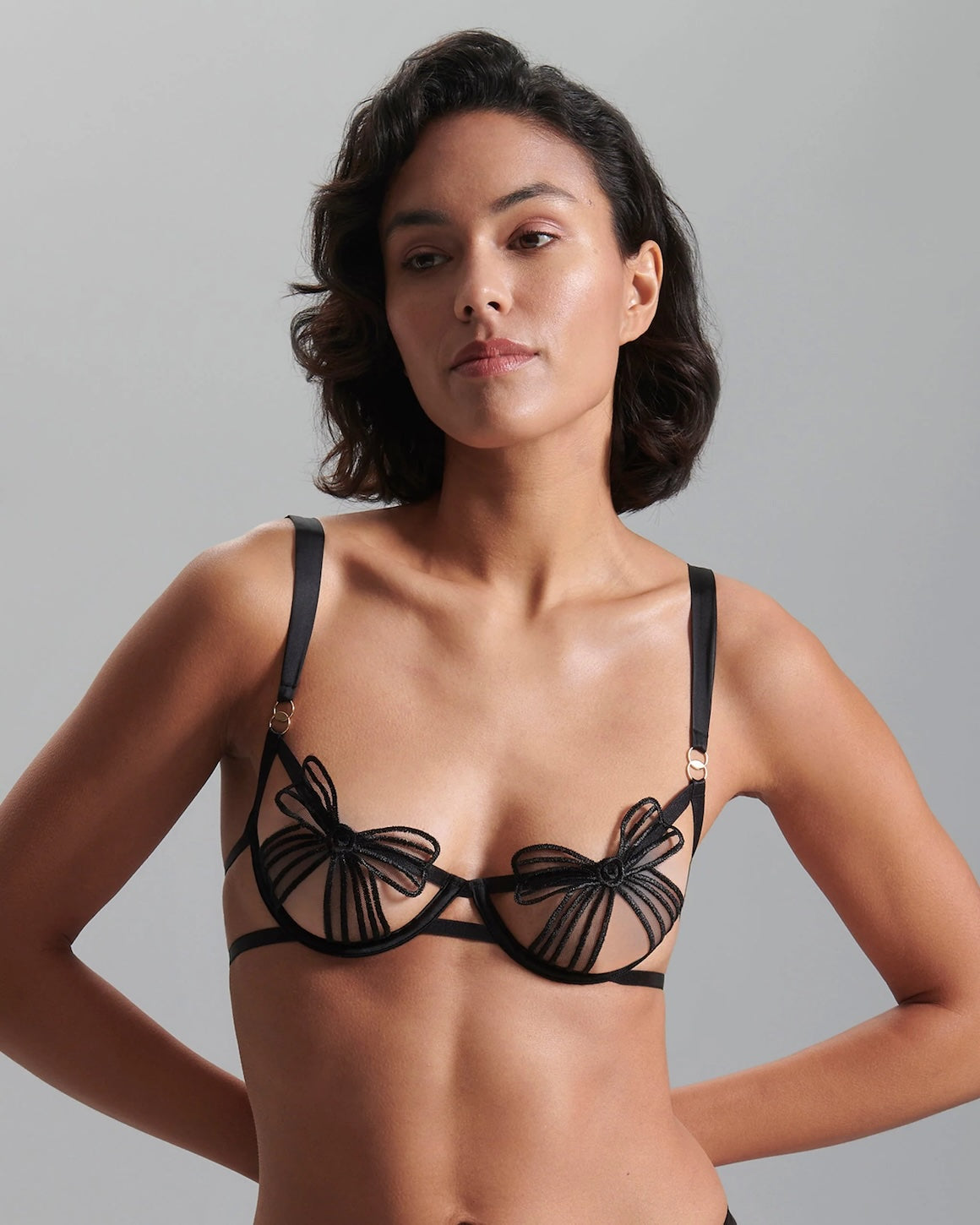Understanding 30D Boobs: A Guide to Fit Shape

Understanding 30D Boobs: A Guide to Fit, Shape, and Support
What Are 30D Boobs, Really? In the often-confusing world of bra sizing, “D cup” carries a lot of assumptions—most of them incorrect. Contrary to popular belief, 30D boobs are not large in volume, but rather full in proportion to a petite torso. Breast size is determined by both the band and cup measurements, not just the cup letter alone.
If you have a narrow ribcage but a bust that’s 4 inches larger than your underbust measurement, you likely wear a 30D. Bust measurement, which is taken around the fullest part of your bust, is crucial for determining your correct bra size. Sizing systems account for different body types and preferences by offering a range of band and cup combinations to suit various needs. And if you’ve been wearing 32C or 34B thinking your boobs are “average” or “hard to fit,” this guide will help set the record straight. The cup volume of a 30D is similar to that of a B cup in a larger band size, which highlights the concept of sister sizes. A chart can help you visualize how different band and cup sizes relate to each other, especially when understanding sister sizes.
The Breakdown: What 30D Means
In bra sizing, two elements define your size:
-
The number (30) = band size, fitting ribcages around 26–28 inches
-
The letter (D) = cup size, which means a 4-inch difference between the band and bust measurements
If you have a narrow ribcage but a bust that’s 4 inches larger than your underbust measurement, you likely wear a 30D. For a woman with a small frame, this means the breasts can appear more prominent in proportion to her body.
So, 30D boobs are relatively projected and full for a petite frame, not necessarily large in overall volume. For a woman with a small frame, 30D boobs can look more noticeable. In fact, a 30D cup has the same volume as a 32C or 34B—this is what’s called sister sizing. The cup volume is equal across these sister sizes, even though the band and cup labels are different.
How Do 30D Boobs Look?
Because the D cup is attached to a small band size, 30D breasts appear lifted, proportionate, and full, but not wide or heavy.
-
On a petite or athletic frame: 30D can look naturally full and projected
-
In tight or unstructured clothing: What a woman wears, such as certain bras or tops, can affect how her 30D boobs appear, and you may notice slight gaping or strain at the bust if your top isn’t cut for curves
-
In the wrong bra size: You might experience spillage, gaping, or lack of support, especially if you’re wearing the wrong size, such as a band that’s too loose
Key takeaway: Cup letters aren’t absolute—a D on a 30 is not the same as a D on a 36. It’s no wonder so many women are confused by bra sizing.
Common Fit Issues with 30D Boobs
If you have 30D breasts, you may face some of these common issues when shopping or wearing bras:
-
Band feels too loose in a 32 or 34 – leading to poor support
-
Cups feel too shallow or wide – resulting in underwire digging or cup gaping
-
Straps fall or dig in – especially if they’re carrying the weight without proper band support
-
Bras flatten or compress your bust – due to shallow cup designs
If you experience these problems, it's a good idea to re-evaluate your bra fit and try different sizes or styles to ensure comfort and support.
That’s why it’s important to choose bras designed with petite bands and deeper cups—not just scaled-down versions of standard sizes. You may also opt for specific features or styles, such as side support or plunge designs, to address fit issues.
Remember, finding the right fit can take time, so be patient and willing to wait until you discover the most comfortable and supportive option for you.
Factors Affecting Breast Shape and Size
When it comes to understanding your unique bra size and achieving the perfect fit, it’s important to recognize that breast shape and size are influenced by a wide range of factors. Genetics play a major role in determining how much breast tissue you have, which directly impacts your cup size and overall breast size. But that’s just the beginning—hormonal changes, body weight, pregnancy, and even age can all cause your bust measurement and cup volume to fluctuate over time.
Your band size, measured snugly around your rib cage, and the difference between this measurement and the fullest part of your bust, are the foundation for finding your true bra size. Many women end up wearing the wrong size simply because they haven’t re-evaluated their measurements or aren’t aware of sister sizes that might suit their body better. For example, a woman with a smaller frame and a full bust may need a smaller band size and deeper cup to achieve the support and comfort she needs, while someone with a larger frame might require a different combination.
Breast shape is just as individual as breast size. Some women have slender, narrow breasts, while others have a rounder, fuller shape. The way your breasts sit on your chest, the distribution of breast tissue, and even the position of your nipples can all affect how a bra fits and how your bust looks in different styles. The type of bra you choose—whether it’s a push-up, underwire, or wireless style—can also make a big difference. Push-up bras and those with structured cups can enhance your natural shape and make your breasts appear larger, while a smaller band size can create a more lifted, supported look.
Lifestyle factors like exercise, diet, and clothing choices also play a part. Regular exercise can change your body composition and, in some cases, your breast size. Some women prefer a more natural look, while others use clothing or even surgical options to enhance their bust. No matter your preference, understanding your body and how different bras and styles suit your shape is key to feeling comfortable and confident.
To find the right bra, it’s essential to be aware of your current bust measurement and to measure yourself regularly—especially after weight changes, pregnancy, or other life events. Pay attention to how the straps, cups, and band fit, and don’t hesitate to try different sizes or styles, including sister sizes, to achieve the best support. A well-fitting bra can make a world of difference in your daily comfort and confidence, so take the time to re-evaluate your bra size and choose what truly suits your body and lifestyle.
By considering all these factors, you’ll be better equipped to find bras that not only fit well but also support your unique shape—helping you look and feel your best every day.
Bra Fitting and Sister Sizes
Finding the perfect fit in the world of bra sizes can feel overwhelming, especially when you’re dealing with a 30D. One of the most helpful tools in your bra-fitting toolkit is understanding sister sizes. Sister sizes are bra sizes that share the same cup volume but differ in band size and cup letter. For example, if you wear a 30D, you have the same cup volume as someone in a 28DD or a 32C. This means you have options—if your 30D bra feels a bit too tight in the band, you might find a 32C more comfortable, while a 28DD could work if you need a smaller band size for extra support.
When trying on a 30D bra, pay close attention to three critical areas: the band, the cups, and the straps. The band should feel snug and supportive around your body, not loose or riding up your back. A band that’s too tight can be uncomfortable, while a loose band won’t provide the support your breasts need. The cups should fully contain your breast tissue without any spillage, gaping, or wrinkling—this ensures the cup size and cup volume are right for your shape. Adjustable straps are also essential; they should stay in place without digging into your shoulders or slipping off.
Navigating the 30D Family
If you find that your 30D bra isn’t quite right—maybe the band feels too tight or the cups don’t sit smoothly—don’t be afraid to try a sister size. Moving up to a 32C gives you a slightly looser band with the same cup volume, while a 28DD offers a smaller band size for a more anchored fit. Remember, the perfect fit is about how the bra feels on your body, not just the number and letter on the tag.
It’s also important to know that cup size and band size can vary between brands and styles. Some brands may cut their cups a bit larger or smaller, and different styles—like balconette, plunge, or t-shirt bras—can suit different breast shapes and preferences. Don’t hesitate to try on a range of bras from different brands to see what suits your body best.
For the most accurate results, consider getting a professional bra fitting at a lingerie store. A fitter can measure your bust and underbust with a tape measure, help you navigate the world of sister sizes, and recommend styles that match your figure and support needs. If you prefer to shop online or at home, try on several sizes and styles, and move around in each bra to see how it feels throughout the day.
Key takeaways for navigating the 30D family:
-
Sister sizes (like 28DD and 32C) have the same cup volume as 30D, but different band sizes.
-
Cup size and fit can vary by brand and style, so always try before you buy.
-
A smaller band size can offer more support for a petite frame, while a larger band may feel more comfortable if you prefer a looser fit.
-
Professional bra fittings and at-home try-ons are both valuable for finding your perfect fit.
-
Prioritize comfort, support, and how the bra suits your body and style preferences.
By understanding sister sizes and being open to trying different bra sizes and styles, you’ll be well on your way to finding a bra that feels as good as it looks. Whether you stick with a 30D or explore the wider family of sister sizes, the goal is always a perfect fit that supports your unique shape and lifestyle.
Best Bra Styles for 30D Boobs
To support 30D boobs effectively, the right structure and shaping are essential. Here are styles that work exceptionally well:
✅ Plunge Bras
These flatter a projected bust and prevent gaping at the neckline. Ideal for V-necks or petite torsos.
✅ Balconette Bras
Create lift and shape without full coverage. They work well for rounder bust shapes or when you want a defined silhouette.
✅ T-Shirt Bras
Seamless cups with enough depth prevent compression and maintain a smooth profile under clothing.
✅ Underwire Bras with Side Support
Offer lift and forward projection, which is especially helpful for women with fuller outer breast tissue.
✅ Wireless Bras with Firm Bands
If you prefer no wires, choose ones with molded cups and a snug, supportive band to keep everything in place.
Best Brands That Carry 30D Sizes
While mainstream brands often start at 32 bands, several lingerie lines specialize in smaller bands with deeper cups:
-
Freya – Known for supportive plunge bras in 28–30 bands
-
Panache & Cleo by Panache – UK brands with expert engineering for full-bust/petite-band sizing
-
ThirdLove – Offers a wide range of sizes, including 30D, with detailed fit personalization
-
Olivia Paisley – Affordable and increasingly size-inclusive
-
Natori & Wacoal – Great for seamless and elegant everyday options
-
Bravissimo – A full-bust brand that offers tailored support for smaller frames
Tips for Fitting and Shopping for 30D
-
Get properly measured at least once a year—especially after weight fluctuations, hormonal changes, or pregnancy
-
Use sister sizing wisely (30D = 32C = 34B), but always check the band snugness first
-
Look for three-hook bands for more anchoring on small frames
-
Prioritize cup depth to avoid flattening or spilling
-
Avoid “S-M-L” sizing in bralettes, which often under-support a 30D bust
Final Thoughts: 30D Is About Proportion, Not Volume
Finally, the 30D size represents a unique comfy balance of petite underbust + fuller bust chest—a body type that deserves as much support and style as any other. Wearing a well-fitted bra in this size provides better posture, comfort, and confidence—because it works with your natural shape, not against it.
When it comes to caring for 30D boobs, it’s important browser to find the right support that helps you achieve comfort throughout your day—whether you’re at the gym exercising or just browsing your favorite site online. Wearing a well-fitted bra can prevent painful issues like nipple irritation or back pain caused by lack of proper space and support. Many women in America face these challenges, but with the right guidance, it’s totally possible to find bras that fit well and feel great. Remember, it’s all about comfort and confidence—because lol, no one should have to deal with discomfort when they’re just trying to live their best life!
Whether you’re wearing a seamless bra to work, a lacy balconette for a night out, or a soft wireless bralette on the weekend photos, there’s a perfect fit for your 30D body—and it doesn’t have to be a compromise.
We hope you feel confident and comfortable embracing your 30D size.


